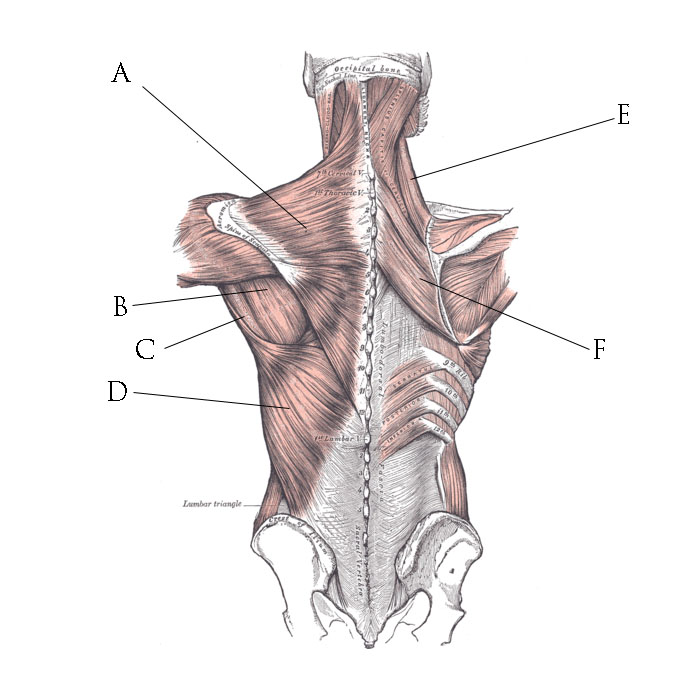Some signs:
You sink into your hips when you shift from two feet to one in the center (e.g. during adagio)
Your arms get left behind when you turn
Your quads and calves get tired when you jump
Your big jumps feel labored and grounded
These are just a few tell-tale signs that you're not using the middle muscles of your back. Think of the muscles in the center as the T's: Trapezius, Teres major and Teres minor. Your Traps are a pair of triangular muscles that also wrap up across the upper back but we're interested in the lower portion of the triangle. Your Teres major and minor are under and to the side of the Trapezius. You can find them if you reach under your arm pit and walk your fingers toward your spine.
 |
| By Henry Vandyke Carter, derivative work: Rafael Di Marco Barros, Public Domain |
The middle muscles, like the middle child and the middle manager but not the middle of an Oreo cookie, often get neglected on pirouettes, jumps and adagio in favor of the flashier muscle groups. We think of our quads and hamstrings on jumps, our glutes on adagio, and a whole host of things during pirouettes.
But the one thing all of those actions have in common is the mid-back. If you can engage these muscles, you will find yourself far more lifted in adagio, more suspended during turns which will allow for multiples, and lighter during jumps.
Accessing the muscles is a matter of being mindful at barre.
--When you prepare through first to a second position arm, feel the fingertips reaching out from your center and to the side.
--When you cambre forward, try not to let your shoulder roll but lengthen the spine as you tilt forward and really try to think of your middle back returning you to your neutral position.
--When you bring your arm overhead in fifth, try to initiate the movement from the middle of your back rather then your elbow or biceps.
Think of these mid-back muscles as the complement to your torso. Just as you engage your torso (your core, your center, whatever you choose to call it), you need to work the muscles on the opposite side of your body.
As you start to become more aware of those muscles (and of course, you are also incorporating the Serratus muscles we talked about in this blog post), your muscle memory will kick in when you are off the barre and moving with nothing to hold onto. These powerful muscles will provide added stability in the center.
Happy dancing~

No comments:
Post a Comment